2022
columns:

Welcome! This is the browsing page for articles published in 2022. You can read the first few paragraphs of each and decide if you want to continue ...
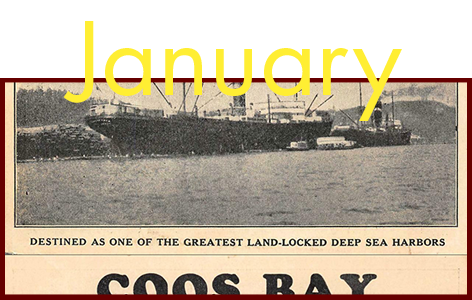
— JANUARY 2022 —“Shoestring railroad” beat the mighty Southern Pacific in Coos Bay fightVery few people outside Coos County, and probably not that many inside it, know what a big deal Coos Bay is. It’s the biggest deepwater harbor on the Northwest coast — that is, between San Francisco and Puget Sound. And it’s far safer than Portland or Astoria, tucked as they are behind the “Graveyard of the Pacific” at the mouth of the Columbia. So, one has to wonder why it had no railroad connection to the outside world until 1916 — more than 30 years after Portland got one. There have to have been some theories and speculations about that among the residents and business leaders in the towns of Coos Bay (then called Marshfield) and North Bend. Especially after, in the early 1900s, the Southern Pacific railroad suddenly stopped work on a feeder line that it had claimed would link to Coos Bay through Drain. The subtext here seemed pretty obvious to Marshfield and North Bend business leaders: Business interests in Portland were eager to prevent Coos Bay from coming on line as a direct competitor. And since Portland and Salem were where most of the state’s political power was concentrated, what they wanted they generally got. That suspicion would grow even stronger after William J. Wilsey started promoting his planned railroad line, circa 1909. But, that one would not turn out to be a bluff; and despite the best efforts of Harriman & Co., it would turn out to be a rare case in which the tiny upstart wins.
|

— FEBRUARY 2022 —Lost-cabin treasure tales tantalize gold seekers in Oregon backcountryLOST OR ABANDONED cabins pop up so often in legends of missing gold mines and buried treasure that they are almost a cliché. Most of them follow a clear pattern or formula — in fact, all lost-treasure stories do: The seeker stumbles across the treasure while doing something else; he is called away for some reason; and he can never find his way back, despite devoting years to fruitless searching. There may not be a more faithful example of that pattern than the story of the lost cabin of Steamboat Mountain. ... |

— MARCH 2022 —Chautauqua meetings were like summer camp for grown-upsIN THE DECADES before the First World War, an organization called Chautauqua arose that was something like a summer camp for grown-ups. People would take vacation time and travel to the Chautauqua center and stay there in tents, either brought from home or rented on site, for a week, or two weeks, or even longer. There, they’d take classes, attend lectures, listen to band concerts, play baseball, and generally try to make up for the previous year’s intellectual deprivation. In Chautauqua’s heyday there were a number of these centers across the country, and President Theodore Roosevelt famously declared them to be “the most American thing about America.” And the biggest one west of the Rockies was in Gladstone, Oregon. |
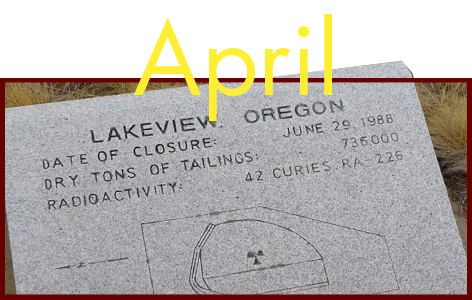
— APRIL 2022 —Oregon’s biggest uranium mine found by an amateur rockhound-hobbyist DURING THE GO-GO years of the uranium-mining rush of the early 1950s, the character of the uranium prospector became iconic. He was basically the gold-seeking “miner 49er” updated for the atomic age: in lieu of a mule, he rode an Army-surplus Jeep; in place of pick and gold pan, he carried a Geiger counter and ultraviolet flashlight. For the better part of a decade seekers of “A-metal” deposits (the “A” stood for “Atomic”) prowled all over the public lands of all the Western states, waving their Geiger counters at every promising rock formation. They spent a lot of time getting excited, and a lot of time being disappointed. Oregon has a lot of uranium, much of it in the form of autinite crystals; but it’s very thinly distributed -- in most deposits, there is enough to set off a Geiger counter and get a prospector all excited, but not enough to mine. So it’s ironic but maybe not surprising that Oregon’s biggest uranium strike was made by a guy who didn’t even own a Geiger counter. |
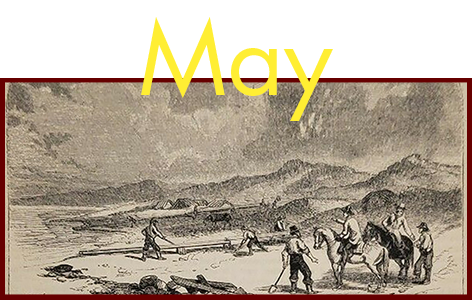
— MAY 2022 —Is treasure of lucky beach-gold miners still out there, hidden in the woods?IMAGINE YOU'RE A gold prospector from the Willamette Valley, on your way to the California gold fields in the first year of the 1848 gold rush. You’re a little late to the party, and you’ve chosen to try to reach the gold fields in a somewhat unusual way: By going over the Coast Range to the beach, and traveling south along the coast. As you make your way southward by the great ocean, you reach a broad expanse of black sand. And when the sun hits it just right, you can see it’s actually glittering … with tiny flakes and grains of gold. You’re all alone on the beach. There aren’t even any other footprints. Apparently nobody else was crazy enough to try to travel to the gold fields via Coos Bay. Everyone else in the area, such as there are, has decamped inland to the gold fields. It’s just you, on the uninhabited edge of a continent, crunching a trillion dollars’ worth of gold under your feet.
|
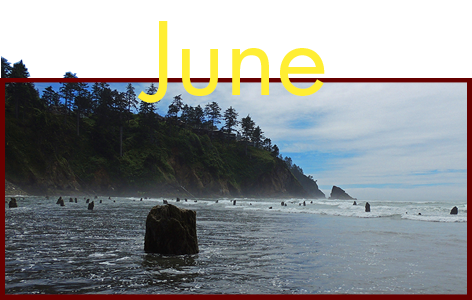
— JUNE 2022 —Deadly ’64 tsunami killed four, did a lot of damage in OregonON THE EVENING of March 23, 1964, Seaside resident Margaret Gammon hadn’t been asleep more than an hour or two when she was awakened by howling. It was the community fire siren, blaring at full blast without stopping. She looked at the clock. It was 11:30 p.m. “I lay in bed thinking to myself, ‘Why doesn’t that fellow at the fire station get his big thumb off the siren button so we can all go back to sleep, and let the firemen take care of the fire?’” she recalled later, in an article for Oregon Historical Quarterly. “In just a few seconds the cars started zipping up our street toward the highway like the devil himself was on their tail. I thought it must be a tremendous fire, so I figured I’d get dressed and go watch it.” It didn’t take long for Gammon to learn that it wasn’t a fire. It was a tsunami — and it was almost upon her.... |

— JULY 2022 —During the war, Oregonians built 50 aircraft carriers in less than 18 months DURING THE FIRST year of the Second World War, the conflict in the Pacific was all about aircraft carriers. With a carrier, one could take the fight to the enemy. Without one, one could only huddle on an island as a passive target, waiting for an enemy carrier’s aircraft to arrive and attack. When the war broke out, the U.S. had seven of these precious warships, but only three were in the Pacific. They were the actual targets of the attack on Pearl Harbor — the Japanese knew if they could get them out of the way, they’d have a free hand for at least a year. It had taken an average of more than three years to build a regular full-size aircraft carrier before the war. Mobilization would cut that timeframe to under a year, but that was still a long wait. The Japanese almost had a free hand for that year anyway. Much of their equipment was just more advanced in 1942, especially airplanes. By the end of that year the U.S. was down to one carrier. Both sides were hurriedly converting existing ships to bolster their fleets, but it certainly looked, from far away, as if the U.S. was not too far from ending up in that helpless position that the Japanese had hoped to put it in with the Pearl Harbor attack. Carriers were rare, complicated ships, hard and time-consuming to build. Japan had lost four of their best ones at Midway, but they still had at least six left. And that’s about the point at which Henry Kaiser decided to go into the aircraft-carrier business. |

— AUGUST 2022 —In lieu of prison, murder-case convict was auctioned off as a temporary slaveRETURN EVERMAN AND his brother Hiram were new arrivals in the frontier town of Cynthian (now Dallas), having come out on the Oregon Trail the previous summer. The community’s impressions of the two were mixed — everyone seems to have gotten along very well with Hiram, but Return had a more squirrely reputation. So nobody was very surprised when, in January of 1852, Return was spotted sneaking out of Cyrenius C. Hooker’s farmhouse when the family was away. There wasn’t any proof. Everman, it later turned out, had hidden the pocket watch he’d stolen from the Hooker home under a log by Rickreall Creek, and he stoutly denied having done the burglary. But Hooker didn’t back down. And Everman was afraid to back down. He figured that most of the community believed him to be innocent, but he thought if he tried to patch things up with Hooker, they’d interpret that as evidence of a guilty conscience and turn against him. So he decided it would be best if he just went ahead and, well, murdered him. “I would rather the news would get home that I had killed a man for trying to injure my character, than for news to go home that I had stolen a watch,” he wrote later, in his written confession. ... |

— SEPTEMBER 2022 —Former Oregon City whorehouse is a national historical treasure today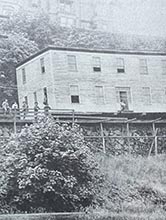 TO THE AVERAGE Oregon City resident, there wasn’t much to celebrate in the vacant, dilapidated old house by the foot of Willamette Falls. The house had, until a few years before, been known as the Phoenix Hotel, and it had been a low-rent boardinghouse with a bad reputation. Popular rumor was that The Phoenix had been an outright bordello. Conveniently located right in the heart of what was then Oregon City’s industrial core, it would have been a handy place for workers in the woolen mills, paper manufacturies, sawmills, and other operations that took advantage of the plentiful water power of the falls. No doubt it did an especially brisk business every payday. It can’t have been brisk enough, though, because in 1906 the owners offered to sell the building and land to the city of Oregon City. There was a brief flurry of interest, and mayor E.G. Caufield got very excited about it. But when the proposal was put to a referendum, the voters quashed the deal, and the old brothel was instead sold to the Hawley Pulp and Paper Co., which wanted the land to expand some of its adjacent facilities. When that happened, the new mayor, W.E. Carll, dropped by to talk to Mr. Hawley. He was hoping to arrange some kind of deal to save the house. Hawley was willing to help; he said he’d gladly donate the building to the city if they could move it off the property. Carll agreed to see what he could do.
NOW, THIS MAY seem like an awful lot of trouble for people to be going through to save an old whorehouse from the wrecking ball. The thing was, though, the Phoenix Hotel had been no ordinary whorehouse. It had been built in 1846, before Oregon was a state or even officially an American territory, by the “Father of Oregon” himself: Dr. John McLoughlin, the head of the Hudson’s Bay Company’s Northwest operations. ...
|

— OCTOBER 2022 —Oregon’s bloody two-month-long manhunt for ‘king of western outlaws’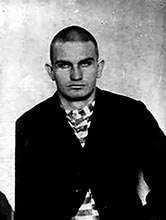 THE “GOLDEN AGE of Outlaws” had a good run — almost 40 years. It kicked off just after the Civil War, when thousands of battle-hardened Confederate veterans with nothing to lose spread out across the Western frontier; and it ended in a field in eastern Washington on Aug. 5, 1902. That was the date when the last Golden Age outlaw, Harry Tracy, went out in a blaze of gunfire following the bloodiest prison break in Oregon history, followed by a two-month-long, even bloodier manhunt. Harry Tracy was the last of the breed of Wild West outlaws like Jesse James, Butch Cassidy, and Billy the Kid. He wasn’t technically an Oregonian. His real name was Harry Severns, and he was born in 1875 in Pittsville, Wisconsin, a child of a highly respected and successful family. He was bright, outgoing, and likable, and he gave no early signs to anyone that he might be headed for a life of crime and murder. That changed, though, soon after he left the nest. He changed his name to Tracy and launched a career in robbery and theft that led him to a gunfight with a pursuing posse in Colorado, in which a member of the posse was shot and killed, quite possibly by Tracy himself — he was always a crack shot. He was arrested and imprisoned. Within a short time, he escaped, skipped town, and did it again. By the time Tracy arrived in Portland, he was still only 23 years old, but he’d been in plenty of trouble, and in and out of plenty of jails and prisons. He had proved himself to be remarkably good at breaking out of them. Of course, in order to be good at breaking out of prison, a criminal has to be pretty bad at not getting caught and imprisoned ... and this was clearly the case with Tracy. Pop historian Stewart Holbrook famously called him a “garden-variety idiot,” and although that might be overstating things a bit, it’s quite clear that he was no master criminal. To be blunt, he was bad at it. Perhaps that’s why, having escaped from his latest penal institution in Utah, he apparently decided to get a fresh start and go straight in a new place, far from the scenes of his many crimes. ... |
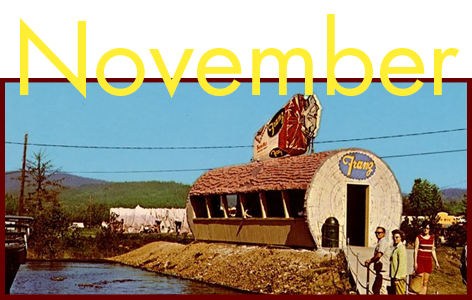
— NOVEMBER 2022 —The Offbeat Oregon story for November 2022 will appear in this space.
|
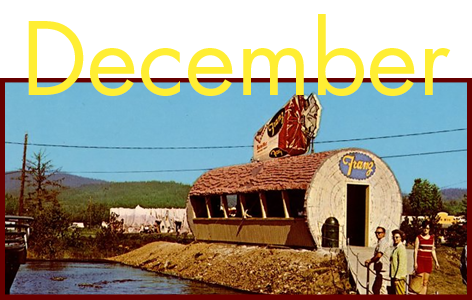
— DECEMBER 2022 —The Offbeat Oregon story for December 2022 will appear in this space.
|
©2008-2022 by Finn J.D. John. Copyright assertion does not apply to assets that are in the public domain or are used by permission. Background photo is by Stuart Seeger, used pursuant to Creative Commons Generic 2.0 license.




